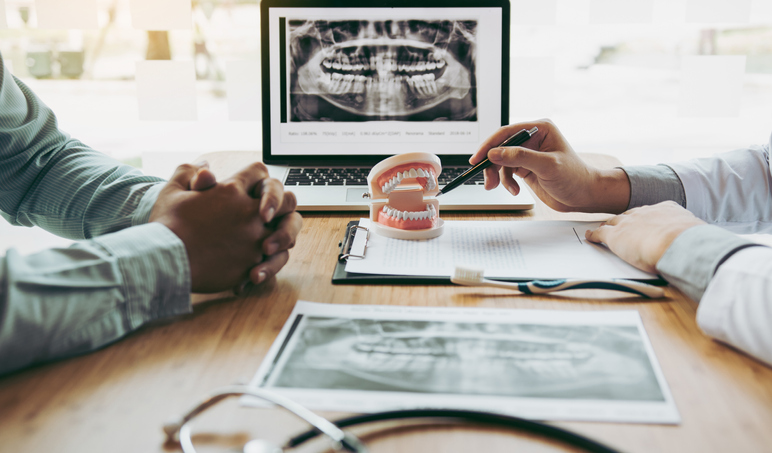
Knowing what to do when you have a dental emergency and when to see a dentist can mean the difference between saving your tooth and losing it.
American Family Physician reports that around 22 percent of the population has experienced dental or oral pain in the past six months, and 12 percent has experienced a toothache. But not all dental issues are considered dental emergencies. Often, you can wait an entire day before receiving treatment.
Knowing what counts as a dental emergency can help you get seen by a medical professional sooner.
If you’re experiencing severe pain or excessive bleeding, have lost a tooth, have a loose tooth, or have signs of an infection, call a doctor and find your nearest emergency dental services.
What Are the Common Types of Dental Emergencies?
A Knocked-Out Tooth
After the first 30 to 60 minutes of losing a permanent tooth, your chances of saving the tooth decrease. Acting fast can mean the difference between saving your tooth and needing to buy a dental implant.
First, pick the tooth up from the crown, and avoid touching the roots. Rinse your mouth and the tooth with water. Don’t use any soap or chemicals, and don’t scrub the root tissue. While holding the tooth in its socket is the best way to preserve it, sometimes that’s not possible. If you can’t return the tooth to its original socket, don’t force it! Instead, place it in a container of milk or saliva.
A Chipped Tooth
Having a chipped tooth is not always an emergency. If you’ve chipped your tooth but aren’t in pain, you can wait a few days to see your dentist and get it filled. However, if you’re experiencing a lot of pain or notice any sharp tooth fragments, you should visit the dentist ASAP.
Horizontal Root Fracture
While chipped teeth occur above the gumline, horizontal root fractures happen below the gumline. After an impact, your tooth may crack in a way that separates the tooth from its root pulp. Whether the tooth is visibly displaced or has little to no mobility, it’s important to seek treatment immediately.
A Toothache
Having a toothache isn’t necessarily a dental emergency. However, if you’re experiencing severe pain, facial swelling, or a fever — or if you have noticed bumps on your gums — your toothache may be a sign of an abscess.
Abscesses
Bacterial infection from tooth decay, damage, or untreated gum disease can lead to abscesses, or pockets of pus. Abscess symptoms include swelling in the face, fever, and tooth sensitivity to hot or cold food and drinks. If you have an abscess, you may also feel tender lymph nodes, constant toothaches, bumps on your gums, or pain while chewing. If an abscess drains pus into your mouth, you may experience a foul taste.
If left untreated, the infection can spread to other areas of your body — like your jaw, head, or neck — and result in life-threatening complications. If you suspect you have an abscess, immediately seek out emergency dental services.
How Can I Avoid Dental Emergencies?
While dental emergencies are often sudden and unavoidable, there are some preventive measures you can take to maintain healthy teeth.
Brush and Floss Daily
Brushing and flossing each day will strengthen your teeth and gums. These oral hygiene techniques can remove plaque, helping preserve your tooth enamel and reducing the risk of tooth decay.
Wear A Mouthguard
If you play a contact sport, wearing a mouthguard is one of the best things you can do to avoid an emergency trip to the dentist. If you take a blow to the face, your mouthguard will protect your teeth and reduce the likelihood of a horizontal root fracture, chipped tooth, broken tooth, or knocked-out tooth.
Visit Your Dentist Regularly
During your dental check-up, your dentist will notice signs of infection, decay, and gum disease. They will also check for loose crowns or fillings and recommend preventive and comprehensive oral hygiene routines to reduce your risk of certain dental emergencies.
In addition to offering high-quality routine check-ups and cosmetic dentistry, Espire in Denver is a 5-star rated emergency dentist with in-house dental plans, walk-in appointments, short-term emergency dental care, and long-term solutions.


